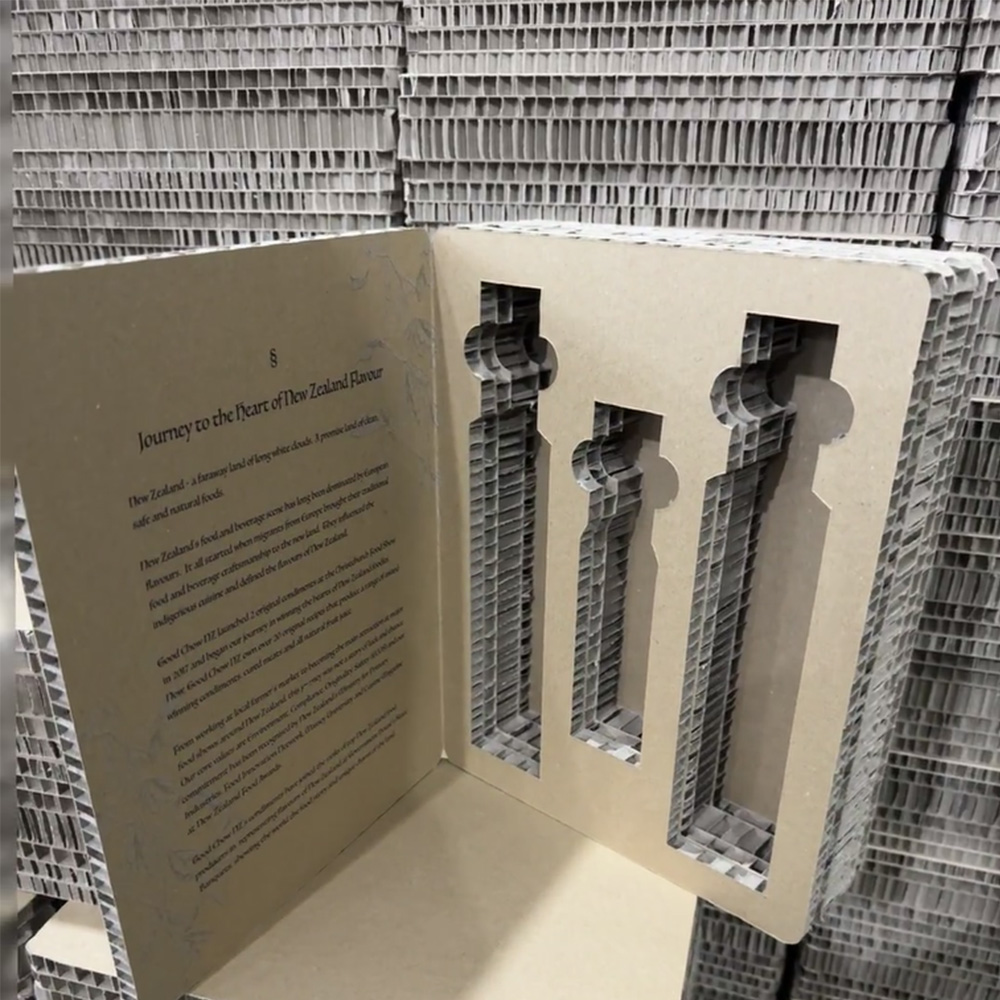Honeycomb board (aka paper honeycomb board / honeycomb core board) is a sandwich structure made with kraft/testliner facings and a hexagonal paper honeycomb core bonded with adhesive. The honeycomb geometry delivers exceptional strength-to-weight, flat crush resistance, and cushioning, making it a fast-growing choice for protective and display packaging, pallets, and furniture cores.
Key Advantages
High strength, low weight: Replaces portions of wood or foams while cutting weight and freight.
Cushioning & shock absorption: Core dissipates impact and vibration, reducing transit damage.
Configurable: Thickness, cell size, and liner gsm can be tuned for strength, cost, and appearance.
Easy to convert: Cut, slot, V-groove, crease, window, laminate, glue into corners, edge guards, sleeves, pads, and pallet components.
Sustainable: Fiber-based, widely recyclable, available with FSC® options; supports plastic reduction goals.
Specs & Structure (Selection Guide)
Thickness: Commonly 10–60 mm; heavy-duty pads/pallet decks 80–100 mm.
Cell size: ~10–30 mm. Smaller cells → flatter surface & higher compressive strength; larger cells → lower cost & softer cushioning.
Facings: Kraft/testliner by default; white liners for premium look; add moisture-resistant coatings for humid lanes/cold chain.
Adhesives: Starch or PVA systems; specify enhanced moisture resistance if required.
Quick pick:
E-commerce appliances/furniture buffers: 20–40 mm.
Pallets & load decks: 40–80 mm.
Door/furniture cores: 10–30 mm prioritizing light weight.
Common Applications
Transport & warehousing: Paper pallets, deck boards, skid feet, layer pads, separators, edge/angle protectors—alternatives to wooden or plastic components.
In-pack protection: Custom cushions for appliances, furniture, sanitary ware, glass/stone, and metal parts.
Display & construction: POP displays, panels, temporary builds—light, flat, and easy to assemble.
Door/furniture cores: Thick, rigid feel with major weight and cost savings.
Converting & Finishing
Forming: V-groove + fold to create clean corners; supports both large radii and sharp edges.
Surfaces: Laminate kraft, whiteboard, or specialty papers; for exposed faces, add varnish/anti-scuff film.
Joining: Hot-melt, PVA/white glue, or stapling; increase bond area for heavy-load zones.
Moisture & edges: Use barrier coatings/films for humid routes; protect edges with edge tape/angle boards.
Performance & Testing
Validate flat compression, edge/load support, drop/impact, and wet-strength retention.
For pallets/platforms, test static/dynamic load and racking/BCT; assess creep and cyclic compression for long storage.
For cold chain or ocean freight, run high-humidity/low-temperature cycles and peel/bond tests.
Limitations & How to Mitigate
Lower puncture resistance than wood/plastic: Add hard facings or reinforced corner/edge pieces for sharp parts.
Humidity sensitivity: Specify moisture-resistant liners/adhesives and protect during storage/transport (shrink/PE bags).
Point-load sensitivity: Distribute load with caps or spreader plates; avoid small hard contact points.
Replacement & Cost-Down Ideas
Replace EPS/EPE foam: Honeycomb edge/angle profiles + liners for recyclable cushioning.
Replace wood crate elements: Honeycomb pads, ribs, and feet with heavy kraft facings for weight and labor savings.
Paper pallets: Honeycomb deck + paper feet = ISPM-15 exempt, light, and export-friendly.
Sustainability & Compliance
Fiber-based and widely recyclable, with FSC® and recycled-content options available. For food/medical proximity, confirm odor/migration performance and add functional barriers where regulations require.
